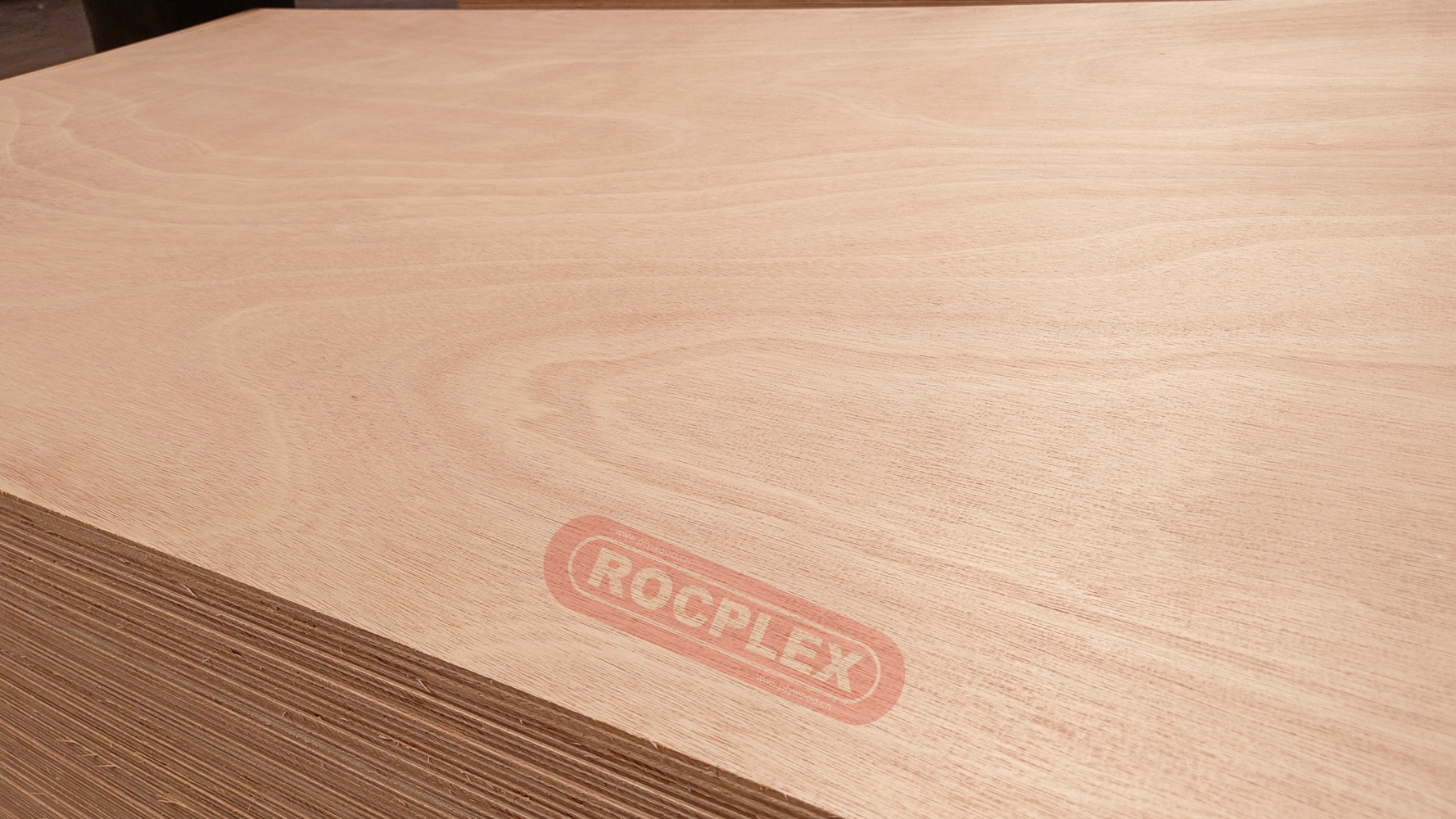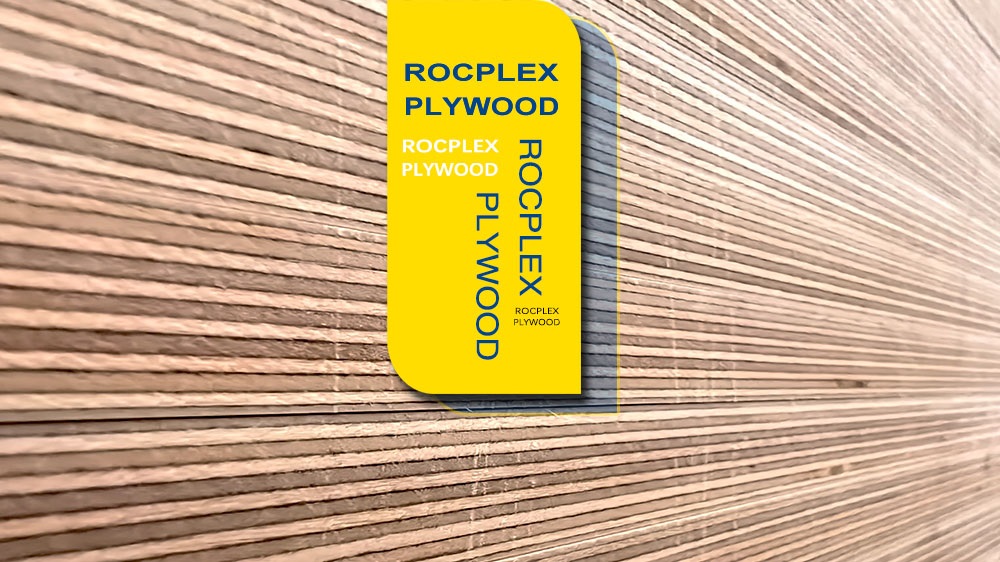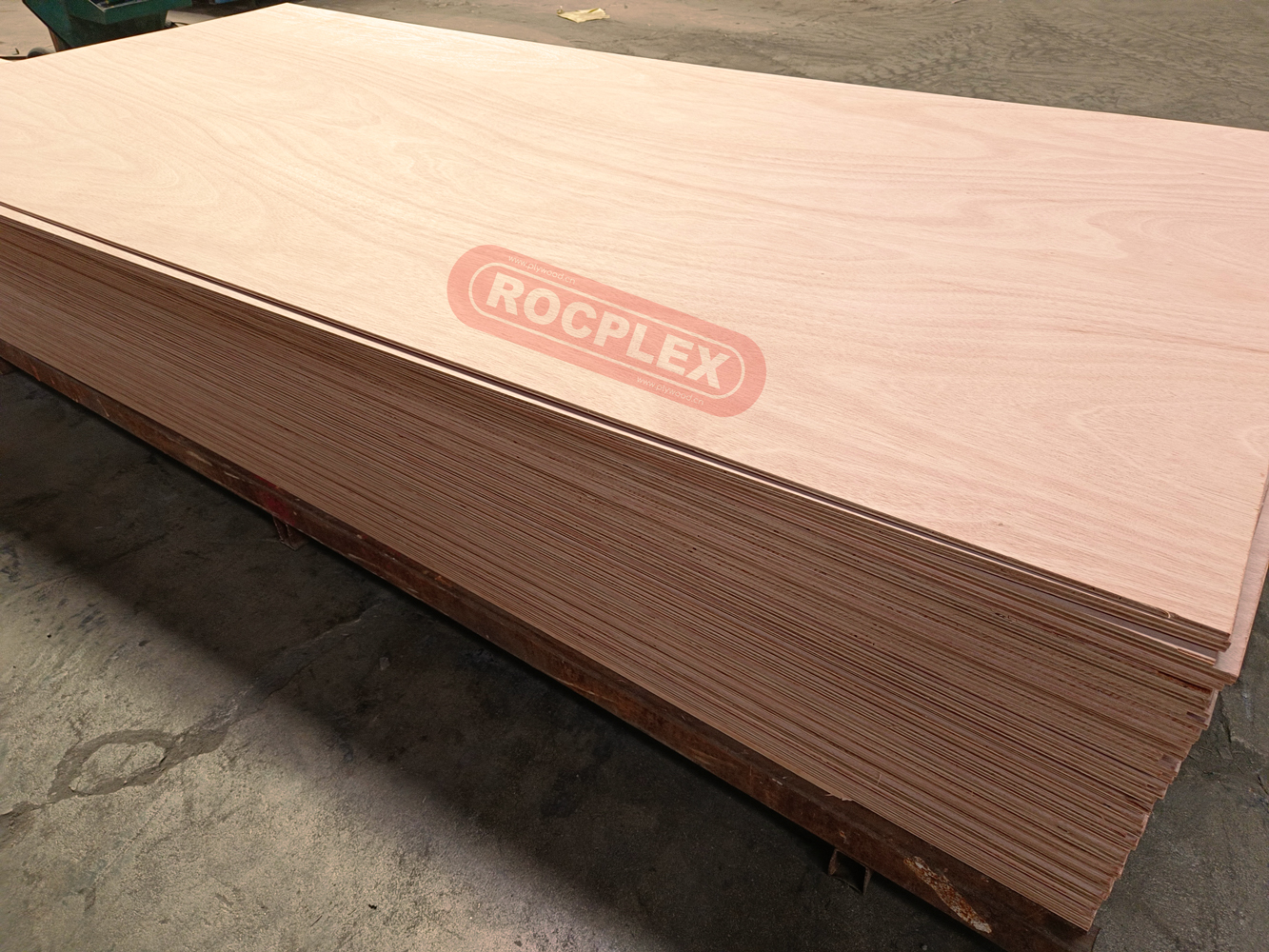What is Marine Plywood?
Marine plywood is a high-quality wood product designed for use in environments where moisture and water exposure are common. Unlike regular plywood, marine plywood is made with waterproof glue and high-quality veneers. This construction makes it resistant to warping, swelling, or delamination when exposed to water. Marine ply is commonly used in boat building and docks. It is ideal for applications where high humidity or direct water contact is a concern. However, its benefits go beyond just marine settings. It is a popular choice for any construction that requires long-lasting performance. Marine plywood is suitable for projects in harsh weather conditions as well.
Marine plywood is often considered the gold standard for water-resistant plywood. However, other options like waterproof plywood, exterior plywood, and boat plywood offer similar benefits. These materials differ in construction, applications, and cost. Understanding these differences is essential when choosing the right product for your project. This comparison explores marine plywood and its closest alternatives. It also examines structural plywood and exterior grade plywood. This guide will help you make an informed decision.
Marine Plywood vs. Waterproof Plywood: A Durability Comparison
Understanding Marine Plywood’s Durability
Marine plywood is specially treated to withstand prolonged exposure to moisture without compromising its structural integrity. Each layer of veneer in marine plywood is made from high-quality, defect-free wood, providing superior strength and water resistance. The use of waterproof glue ensures that the layers remain bonded even in wet conditions, making exterior grade plywood ideal for outdoor applications such as boat building, docks, and exterior walls.
The durability of marine plywood is also reflected in its classification. It is typically rated according to international standards, such as BS 1088, which ensure it meets strict requirements for moisture resistance and strength. This makes exterior grade plywood an excellent choice for construction projects that demand long-lasting, water-resistant materials.
Comparing Waterproof Plywood
Waterproof plywood, while similar to marine plywood in its water-resistant properties, is generally considered less durable in long-term water exposure. Waterproof plywood is often treated with chemicals or coatings that provide a temporary barrier against moisture, but it may not be able to withstand constant or prolonged exposure to water like outdoor plywood can.
For projects that require moderate water resistance but are not continuously exposed to moisture, waterproof plywood offers a cost-effective alternative. However, for high-stakes applications such as marine construction, marine ply remains the superior choice.
Marine Plywood vs. Boat Plywood: Which One is Better?
The Strengths of Boat Plywood
Boat plywood is a term often used interchangeably with marine ply, but there are some differences worth noting. Boat plywood is specifically crafted for constructing boats and other watercraft. This design makes it highly resistant to rot and moisture. Like marine ply, boat plywood is made with high-quality veneers and waterproof glue. These features ensure that the material stays stable, even in wet environments.
Boat plywood may also have extra treatments or coatings. These enhance its water resistance even more, making it ideal for building boats, docks, and other marine structures. In many cases, boat plywood and exterior grade plywood can be used interchangeably. Both types offer excellent moisture resistance and strength for similar applications.
When to Use Marine Plywood
Marine plywood, on the other hand, is not exclusively limited to boat construction.
Its versatility makes it popular for many outdoor projects. These include exterior walls, roofs, and furniture exposed to weather elements. While boat plywood is highly specialized, exterior grade plywood has a wider range of uses. This broader applicability makes outdoor plywood a more flexible choice for builders and contractors.
When choosing between exterior grade plywood and boat plywood, consider the specific demands of your project. For high-moisture environments, both options provide excellent durability, but marine plywood’s broader usability makes it a more versatile material for various applications.
Exterior Plywood and Marine Plywood: Outdoor Applications Compared
How Exterior Plywood Differs
Exterior plywood is another popular option for outdoor construction, particularly in situations where the material will be exposed to the elements but not necessarily submerged in water. Exterior plywood is often treated with water-resistant chemicals and adhesives, providing a reasonable level of moisture resistance. However, it is not designed for continuous water exposure, meaning it may degrade faster than marine plywood in wet environments.
For projects like exterior walls, roofs, or outdoor furniture, exterior plywood can be a cost-effective alternative to outdoor plywood, offering adequate protection against rain and humidity without the premium price tag associated with exterior grade plywood products.
Why Marine Plywood Outperforms Exterior Plywood
While exterior plywood can handle moderate moisture exposure, marine plywood is engineered to handle extreme conditions. The high-quality veneers and waterproof glue used in marine ply make it far more resistant to warping, swelling, or delamination over time. This makes outdoor plywood the ideal choice for projects where long-term exposure to water or high humidity is unavoidable, such as in boat building or dock construction.
For outdoor projects where durability and moisture resistance are critical, marine ply remains the top choice. However, if budget constraints are a concern, exterior plywood can still provide sufficient protection in less demanding environments.
Structural Plywood vs. Marine Plywood: A Strength Comparison
The Role of Structural Plywood
Structural plywood is designed primarily for load-bearing applications, offering high strength and stability for use in construction. Unlike marine ply, structural plywood is not necessarily designed to withstand moisture exposure, but it excels in providing the structural integrity needed for walls, roofs, and floors.
Structural plywood is widely used in residential and commercial construction. Its high load-bearing capacity makes it ideal for framing and support structures. While it may not have the same moisture resistance as marine plywood, it serves well for interior projects. It’s a great choice for areas where water exposure is minimal.
Marine Plywood for Structural Use
Marine plywood can also be used in structural applications, particularly in environments where both strength and moisture resistance are required. Structural plywood generally has high load-bearing capacity, making it strong and reliable. However, outdoor plywood has the added advantage of water resistance. This feature makes it suitable for outdoor projects exposed to moisture, like bridges and piers. Marine plywood’s resilience to the elements makes it a great choice for structures in wet conditions.
For projects needing both strength and moisture resistance, outdoor plywood provides a versatile solution. It meets both structural and environmental requirements effectively. However, when water exposure is not a concern, structural plywood may be more cost-effective. This option maintains strength without the added expense of water-resistant properties.
Marine-Grade Plywood: What Sets It Apart?
Defining Marine-Grade Plywood
Marine-grade plywood is often considered the highest standard of plywood when it comes to water resistance and durability. It is manufactured with the best-quality wood veneers, ensuring that there are no voids or gaps within the layers. This meticulous construction makes marine ply resistant to moisture, rot, and delamination, even in the most challenging environments.
Marine-grade plywood is commonly used in high-end construction projects where durability and longevity are paramount. While it shares many similarities with marine ply, exterior grade plywood is typically rated for more demanding applications, making it the material of choice for boat building, dock construction, and other marine-related projects.
Applications of Marine-Grade Plywood
In addition to its use in marine environments, marine-grade ply is also popular in other industries where moisture resistance and strength are essential. For example, it is often used in the construction of outdoor furniture, decks, and even cabinetry that may be exposed to humidity.
Marine Plywood vs. Marine-Grade Plywood: Key Differences
Quality of Construction
While marine ply is highly resistant to moisture, marine ply represents an even higher standard of construction. marine ply is made from the finest materials, with each layer of veneer being free of voids or knots. This results in a stronger, more uniform sheet that can withstand extreme conditions for extended periods. The rigorous manufacturing process ensures that marine ply remains resistant to moisture and decay, even in continuous water exposure.
Marine plywood, while also highly durable, may include minor imperfections in the wood veneers. These imperfections do not necessarily affect performance in many applications, but they do distinguish it from marine ply in terms of quality. For most outdoor and marine projects, standard marine ply is more than sufficient, but for projects where the highest level of durability is needed, marine ply offers an extra level of assurance.
Cost Considerations
Cost is another important factor when deciding between exterior grade plywood and outdoor plywood. outdoor plywood is generally more expensive due to its superior quality and the careful selection of defect-free veneers. For high-budget projects that demand the best performance, marine-grade ply is the optimal choice, but for more typical outdoor or marine construction needs, marine ply offers excellent durability at a more affordable price.
Applications: When to Choose Marine Plywood Over Alternatives
Ideal Applications for Marine Plywood
Marine plywood is particularly well-suited for any construction project where water or moisture exposure is a concern. Its most common uses include boat building, outdoor decking, docks, and any application where wood will come into direct contact with water. In addition to these high-moisture environments, exterior grade plywood is also a great choice for exterior walls, roofing, and even furniture that will be exposed to the elements.
One of the key advantages of marine ply is its versatility. While it is designed for marine environments, its resistance to moisture, rot, and decay makes it an excellent material for a wide range of projects, from residential construction to outdoor installations. This makes it a valuable material for contractors and builders looking for a reliable, long-lasting wood product.
Comparing Applications of Waterproof and Exterior Plywood
Waterproof plywood, as its name suggests, is treated to resist water. However, it may not be as durable as outdoor plywood when exposed to constant moisture. It is a good option for areas with occasional water exposure. Bathrooms, kitchens, and outdoor furniture are typical uses for waterproof plywood. Yet, it may not hold up as well in continuously wet environments.
Exterior plywood, like waterproof plywood, is treated to resist moisture, but it is often used in areas that will be exposed to weather elements without being submerged in water. For example, exterior plywood is commonly used for siding, roofing, and exterior walls. It provides good moisture resistance in environments where rain or humidity is present but does not offer the same level of water resistance as marine ply in fully submerged or high-humidity conditions.
Longevity: How Long Does Marine Plywood Last?
Durability in Different Environments
The longevity of exterior grade plywood depends largely on the conditions it is exposed to and how well it is maintained. In marine environments, where the wood is in constant contact with water, marine ply can last for decades if properly treated and maintained. Its resistance to rot and delamination ensures that it can withstand the harsh conditions of saltwater, freshwater, and high humidity without losing its structural integrity.
When used in exterior construction or other non-marine applications, marine ply offers a similarly long lifespan. It is highly resistant to weathering, which makes it an excellent choice for outdoor projects. With regular maintenance, such as sealing and reapplying protective coatings, marine ply can remain in excellent condition for many years, even when exposed to harsh weather.
Comparing Longevity with Structural Plywood
Structural plywood, while strong and durable, does not offer the same level of moisture resistance as marine ply. In dry or minimally humid environments, structural plywood can last just as long as outdoor plywood, but when exposed to water, it may degrade more quickly. For load-bearing applications where water exposure is not a concern, structural plywood is an excellent choice, but for projects where both strength and water resistance are needed, outdoor plywood provides a better long-term solution.
Environmental Considerations
Sustainability of Marine Plywood
One of the growing concerns in the construction industry is the sustainability of the materials used. Marine plywood is typically made from high-quality hardwoods, such as mahogany or Okoume, which are often sourced from tropical forests. This has raised concerns about deforestation and the environmental impact of producing exterior grade plywood.
To mitigate these concerns, it is important to ensure that outdoor plywood is sourced from sustainably managed forests. Certifications like the Forest Stewardship Council (FSC) assure that the wood in marine ply comes from responsible forestry practices. Choosing FSC-certified marine plywood helps builders reduce the environmental impact of their projects. This certification supports sustainable forestry. Builders still benefit from the durability and moisture resistance of the material while supporting responsible practices.
Using Waterproof Plywood and Exterior Plywood
For builders looking for more environmentally friendly options, waterproof plywood and exterior plywood may offer a viable alternative, especially in projects where the superior moisture resistance of outdoor plywood is not required. These types of plywood are often made from more readily available softwoods, reducing the pressure on tropical hardwood forests. However, it is still important to ensure that any wood product used is sourced from responsibly managed forests.
Fire Resistance of Marine Plywood
Marine Plywood’s Fire Performance
In addition to its moisture resistance, marine plywood also offers reasonable fire resistance, particularly when treated with fire-retardant chemicals. While no wood product is entirely fireproof, exterior grade plywood can be treated to slow the spread of flames, making it a safer option for certain applications.
Fire-resistant treatments are often applied to marine ply used in buildings or structures where fire safety is a concern. This makes it a good option for outdoor constructions near wooded areas or in climates prone to wildfires. When combined with its moisture resistance, the fire performance of treated exterior grade plywood provides an added layer of protection.
How Structural Plywood Compares
Structural plywood can also be treated with fire-retardant chemicals, providing similar benefits in terms of fire safety. However, untreated structural plywood is more vulnerable to fire compared to outdoor plywood, particularly in areas where moisture may cause additional damage over time. For projects where both moisture and fire resistance are important, treated marine ply is the better choice.
Marine Plywood Frequently Asked Questions
Q1: What is marine plywood used for?
A: Marine plywood is commonly used in boat building, docks, and other outdoor applications where long-term water exposure is a concern.
Q2: How does marine plywood differ from waterproof plywood?
A: While both resist moisture, marine ply is designed for continuous water exposure, while waterproof plywood is better suited for occasional contact with water.
Q3: Can marine plywood be used for roofing?
A: Yes, marine plywood is often used for roofing in areas with high humidity or where the roof may be exposed to water over time.
Q4: What makes marine-grade plywood different from marine plywood?
A: Marine-grade ply is made to a higher standard, using defect-free veneers and superior construction for use in demanding environments.
Q5: Is marine plywood environmentally friendly?
A: Marine ply can be environmentally friendly if sourced from sustainably managed forests. Look for FSC certification to ensure responsible forestry practices.
Q6: How long does marine plywood last?
A: Marine ply can last for decades when properly maintained, even in harsh marine environments where it is continuously exposed to water.
Post time: Nov-09-2024




